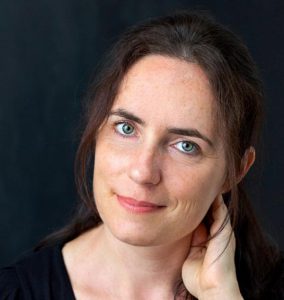
Réka Újlaki-Nagy, Research Centre for the Humanities, Budapest
The Label of Judaization among Early Modern Transylvanian Antitrinitarians
Accusations of “Judaization” were widespread during the early modern era. Catholics and various representatives of the Reformation mutually imposed this stigma on each other. Anti-Trinitarians were also actively involved in the mutual blame game, moreover, the non-Adorantists (Lat. non-worshippers of Jesus), a prevailing anti-Trinitarian trend in Transylvania in the 1570s, particularly frequently received this stigma. They were referred to as “Judaizers” even by other anti-Trinitarians and named as “philo-Hebraics” in academic literature.
In my presentation, I will make an attempt to treat these internal allegations seriously and explore their potential origins. My main question concerns why especially non-Adorantists have been so heavily stigmatised in this regard. Does non-Adorantist theology inherently align with an affinity towards Judaism? Does the belief in Jesus’s full humanity naturally result in prioritizing the Old Testament and affirming the validity of the Mosaic Law?
I suggest that the relation of non-Adorantists to Judaism and Law was determined primarily on their response to a key question: in case Jesus’ death was not an act of propitiation planned and necessary for the redemption of mankind, as they all believed, what was its purpose and how did it contribute to the history of salvation. In order to verify the correlation, I will examine the approach towards Judaism, the Mosaic Law and the Old and New Testaments amongst the main representatives of Transylvanian non-Adorantism during the 1570’s and 1580’s. At the end of my lecture I will also touch upon the impact of the fear from Judaization on the East-Central European history of anti-Trinitarianism.
Réka Újlaki-Nagy studied Hungarian and Hebrew literature at Babeş-Bolyai University in Romania. During her university years, she began delving into Sabbatarian manuscripts and the history of Transylvanian Sabbatarianism. This topic, along with the broader context of the Transylvanian Radical Reformation, has remained the primary focus of her research. She started her PhD studies at the University of Szeged in Hungary and completed them at the Theologisches Forschungskolleg in Univeristy of Erfurt. Her dissertation, focusing on the early period of Transylvanian Sabbatarianism, was defended in Erfurt in 2021 and published as a monograph in 2022 in the Refo500 series (Christians or Jews? Early Transylvanian Sabbatarianism (1580-1621), Vandenhoeck&Ruprecht). Additionally, she has authored two other source editions based on texts related to Sabbatarianism or written by Sabbatarians (Korai szombatos írások [Early Transylvanian Writings], University of Szeged, 2010; Zsidó székelyek. A bözödújfalusi szombatos közösség emlékezete [Jewish Székelys. The Memory of the Sabbatarians of Bözödújfalu], Balassi, 2020). Since 2018, she has been employed as a research fellow at the Institute of History of the Hungarian Academy of Sciences (now renamed HUN-REN Research Centre for the Humanities). Here she participated in an interdisciplinary project exploring encounters between Christianity, Islam, and Judaism in seventeenth-century Ottoman Hungary and Transylvania. As part of this project, she was tasked with publishing a Sabbatarian translation of a rabbinic commentary on Talmud (Pirkei Avot). The objective of her next project is to compile a comprehensive bibliography of Transylvanian Sabbatarianism and to write the community’s history during the nineteenth and twentieth centuries.